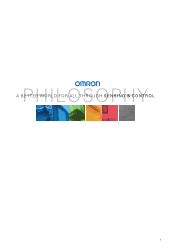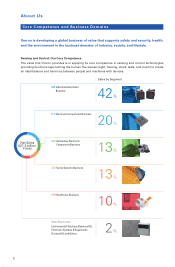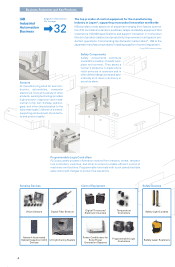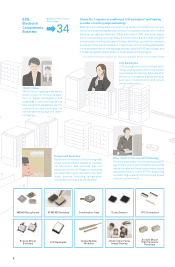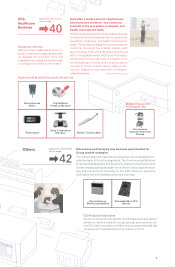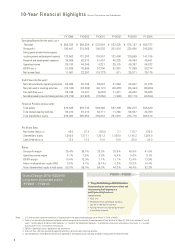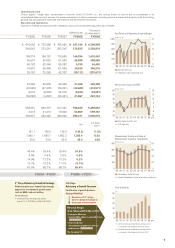Omron 2009 Annual Report Download - page 13
Download and view the complete annual report
Please find page 13 of the 2009 Omron annual report below. You can navigate through the pages in the report by either clicking on the pages listed below, or by using the keyword search tool below to find specific information within the annual report.
11
We are advancing a future-oriented management
approach focused on medium- and long-term growth
and have designated fiscal 2009 as the “year in which
we solidify our footing and prepare for the future.”
Fortifying our On-Site Capabilities as a
Foundation for Customer Creation
What is needed in our future-oriented management
to “solidify our footing and prepare for the future?”
After much contemplation, I recalled the Nishi Health
System that Omron founder Kazuma Tateisi was so
passionate about. While modern medicine generally
views the heart as the pump that powers the circula-
tion of blood throughout the body, the Nishi Health
System recognizes that contractive motions of capillary
blood vessels as they sense changes in external con-
ditions also pump the blood. The heart instead serves
primarily as a regulating tank for the blood the capil-
laries send to it, and arteries and veins are the pipes
connecting the pump and tank. Put simply, the capil-
laries provide the vitality we need to live.
Applied to a business operation, the changes in
the market and customers are the external changes,
and the capillaries throughout the organization that
sense those changes are the company’s on-site capa-
bilities, including marketing, development, production,
quality assurance, advertising, sales and maintenance.
When it becomes too cold (recession), the capillaries
don’t function fully and a person can’t survive, yet
hasty improvements (quick fixes such as drastic cost
cuts) will only result in a temporary recovery. True
recovery requires reconnecting even the smallest cap-
illaries and recreating a system that will supply energy
to the whole body.
How healthy company’s on-site capabilities are in
times of recession will be revealed in the changes of
the company’s market share, which in the future will
lead to wider gaps in business results between its
competitors. The Omron Group is fortifying its on-site
capabilities so that each and every one of its capillaries
is fully responsive to the changes in the market and in
our customers.
We are further emphasizing our corporate core
value as the heart and unifying force of the Omron
Group and achieving the highest level of corporate
governance based on our core values, the Omron
Principals, which are shared globally throughout the
Omron Group. I believe this is essential as we re-envi-
sion our profit structure, advance customer creation,
and endeavor to make new contributions to society
through the creation of social needs.
I wish to express my sincere gratitude to all our
stakeholders and request your ongoing support as the
Omron Group lays the groundwork for future growth.
August 2009
Yoshio Tateisi, Chairman of the BOD


